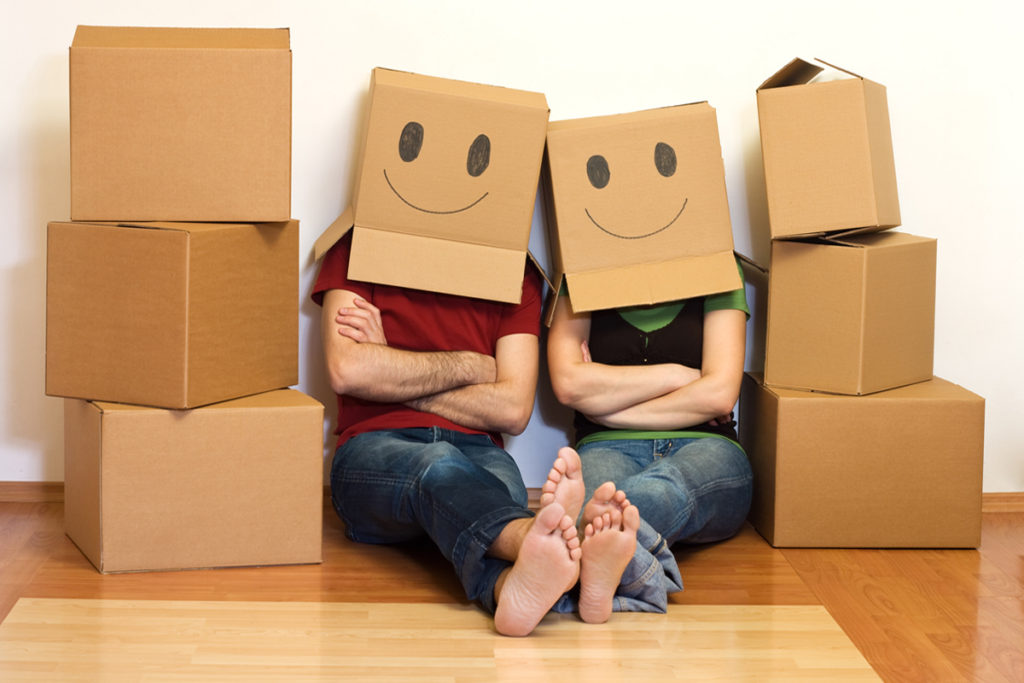Moving is often considered one of the most stressful life events, but it can also be an opportunity for a fresh start. As you prepare to transition to a new home, one of the most crucial steps in the process is decluttering. Decluttering before moving isn’t just about tidying up, it’s about setting yourself up for a smoother, more efficient move and a cleaner, more organized new home. This blog will explore the top reasons why you should declutter before moving and provide tips to help you integrate this important task into your move preparations.
Why Decluttering Before Moving is Essential
1. Reduces Moving Costs
When you declutter before moving, you significantly reduce the volume of items you need to transport. Most moving companies base their fees on the weight and size of your belongings, so fewer items mean lower costs. By eliminating unnecessary or unwanted items, you’re effectively cutting down on the number of boxes, packing materials, and the labor required to move them. Whether you’re hiring professionals or renting a moving truck, decluttering can lead to substantial savings.
2. Saves Time and Energy
The fewer items you have, the less time it takes to pack, load, and unload your belongings. This not only makes the physical aspect of moving easier but also frees up time for other important move preparations. Packing up a home is a time-consuming process, but when you declutter before moving, you streamline this task significantly. You’ll spend less time sorting through things, wrapping fragile items, and labeling boxes, which leaves you more time to focus on other elements of your move, such as completing your pre-move checklist or preparing your kids for the move.
3. Eases the Transition to Your New Home
Moving into a new home is an opportunity to start fresh, and decluttering before moving can help facilitate this transition. Bringing fewer items with you means that you can organize your new space more effectively. Without the burden of unnecessary clutter, you can set up your new home in a way that reflects your current lifestyle and needs. This can be particularly beneficial if you’re downsizing, as you’ll have less space to accommodate excess items.
4. Reduces Stress and Anxiety
Moving is inherently stressful, but a cluttered environment can exacerbate those feelings. Clutter has been shown to increase feelings of stress and anxiety, as it creates a sense of chaos and disorder. By decluttering before moving, you can alleviate some of that stress and create a more calming environment during the transition. This is especially important if you’re trying to prepare your kids for the move, as a less chaotic home environment can help them feel more at ease with the changes ahead.
5. Helps You Stay Organized
Decluttering before moving gives you a chance to assess what you truly need and use. It’s an opportunity to create a more organized and intentional living space. As you sort through your belongings, you can categorize them into items to keep, donate, sell, or discard. This process not only helps you get rid of unnecessary items but also allows you to organize the things you plan to keep. When you arrive at your new home, you’ll know exactly what you have and where it should go, making unpacking and setting up much more efficient.
How to Declutter Before Moving
Decluttering before moving doesn’t have to be overwhelming if you approach it methodically. Here’s how to incorporate decluttering into your move preparations:
1. Start Early
One of the biggest mistakes people make is waiting until the last minute to start decluttering. Ideally, you should begin the decluttering process as soon as you know you’re going to move. This will give you ample time to go through each room, assess your belongings, and make decisions about what to keep, donate, or discard. Starting early also allows you to tackle the task in smaller, more manageable increments, rather than trying to do it all in a rush right before moving day.
2. Create a Pre-Move Checklist
A pre-move checklist is a valuable tool that can help you stay organized and on track during the decluttering process. Your checklist should include all the tasks you need to complete before moving day, with decluttering as a priority. Break down the decluttering task into smaller steps, such as decluttering one room or category of items at a time. For example, you might start with clothing, then move on to kitchen items, followed by books, and so on. As you complete each task, check it off your list. This will give you a sense of accomplishment and ensure that you don’t overlook anything important.
3. Involve the Whole Family
Decluttering before moving isn’t just for adults—your kids can get involved too. Preparing your kids for the move includes helping them understand the importance of decluttering and allowing them to participate in the process. Encourage them to go through their toys, clothes, and other belongings, and decide what they want to keep and what they’re ready to part with. This can be a valuable lesson in organization and decision-making, as well as a way to ease any anxiety they may have about the move. Additionally, involving your kids in the decluttering process can help them feel more invested in the move and excited about the new home.
4. Use the One-Year Rule
A simple yet effective way to decide what to keep and what to let go of is to use the one-year rule. If you haven’t used or worn an item in the past year, chances are you won’t miss it if you let it go. This rule can help you make quick decisions about items you’re on the fence about. It’s particularly useful when decluttering clothing, kitchen gadgets, and other household items that tend to accumulate over time.
5. Sort Items into Categories
As you go through your belongings, sort them into categories: keep, donate, sell, and discard. The “keep” pile should consist of items that you use regularly or have significant sentimental value. The “donate” pile can include items that are still in good condition but no longer serve a purpose in your life. The “sell” pile can include valuable items that you no longer need but could earn you some extra cash. Finally, the “discard” pile should be reserved for items that are broken, outdated, or no longer usable. Sorting items into these categories will make the decluttering process more organized and efficient.
6. Consider the Layout of Your New Home
As you declutter before moving, keep your new home’s layout and storage space in mind. If your new home has less storage or different room configurations, you may need to be more selective about what you bring with you. For example, if your new kitchen has fewer cabinets, you might need to downsize your collection of pots and pans. By considering the layout of your new home, you can make more informed decisions about what to keep and what to let go of.
7. Donate and Sell Unwanted Items
Once you’ve decided which items you no longer need, consider donating or selling them. Donating is a great way to give back to your community, and many charities will even pick up large items like furniture. If you have valuable items, selling them can help offset some of your moving costs. You can hold a garage sale, list items online, or take them to a consignment shop. Not only does this reduce the amount of stuff you have to move, but it also gives your unwanted items a new life with someone who will appreciate them.
Preparing Your Kids for the Move
As mentioned earlier, preparing your kids for the move is an important aspect of the decluttering process. Moving can be an emotional experience for children, especially if they’re leaving behind friends, familiar surroundings, and their home. Here are some tips to help your kids navigate the decluttering and moving process:
1. Talk to Them About the Move
The first step in preparing your kids for the move is to have an open and honest conversation with them. Explain why you’re moving and what they can expect. Reassure them that while moving can be challenging, it’s also an opportunity for new adventures and experiences. Address any concerns they may have and involve them in the move preparations.
2. Make Decluttering Fun
Decluttering doesn’t have to be a chore—make it a fun activity for your kids. You can turn it into a game by setting a timer and seeing how many items they can declutter in a certain amount of time. Offer small rewards or incentives for their efforts, such as a special treat or extra playtime. By making the process enjoyable, you can help your kids feel more positive about the move.
3. Allow Them to Make Decisions
Give your kids some control over the decluttering process by allowing them to make decisions about their belongings. This can help them feel more empowered and less anxious about the move. Encourage them to think about what they really need and use, and what they’re ready to part with. This can also be a good opportunity to teach them about the importance of letting go of things that no longer serve them.
4. Create a Memory Box
If your kids are having a hard time letting go of certain items, consider creating a memory box. This can be a special box where they can store a few sentimental items that they want to keep but may not use regularly. This way, they can still hold onto the memories associated with those items without feeling overwhelmed by clutter.
Final Thoughts
Decluttering before moving is a crucial step that can make the entire process smoother, less stressful, and more efficient. By reducing the amount of stuff, you need to move, you’ll save time, money, and energy. Plus, you’ll set yourself up for a more organized and intentional living space in your new home. As you incorporate decluttering into your move

